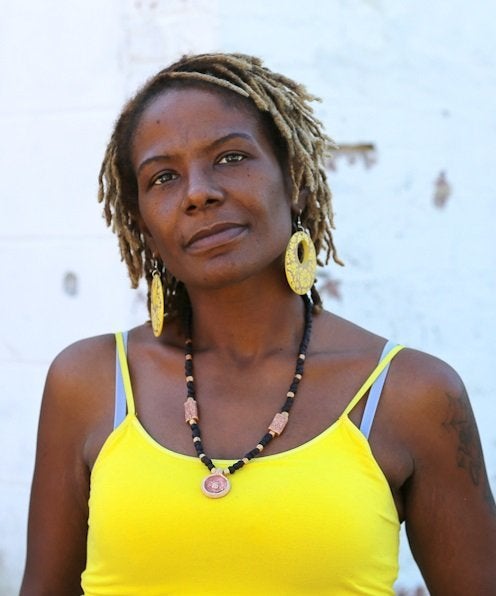A new report is ensuring human trafficking survivors’ voices are heard.
On Tuesday, the U.S. government released its first-ever report on human trafficking written by survivors.
In the document, 11 survivors of sex and labor trafficking, who were appointed by President Obama to the first U.S. Advisory Council on Human Trafficking in 2015, provide recommendations on how to improve federal trafficking policies ― ranging from legislation to public awareness campaigns to victims’ services.
The U.S. is the first country in the world to produce such a report, according to the State Department.
“For the first time in the history, we [survivors] will be able to help,” Tina Frundt, report co-author and sex trafficking survivor, told The Huffington Post. “To be quite honest, the laws that were passing didn’t have too much to do with what we really needed ― our voices were being lost.”

Human trafficking ― or the harboring or transport of persons for the purposes of exploitation ― impacts around 1.5 million victims in the U.S, and 27 million victims worldwide, according to UNICEF.
The new report lays out five recommended areas for the federal government to better support trafficking survivors.
1. Ensure Law Enforcement Is Trained In Anti-Trafficking
The report recommends making trainings in human trafficking for law enforcement standardized nationwide, and facilitated by survivors.
“For labor and domestic servitude [for instance], you need trainings by people who were trafficked, to understand the networks and the real businesses that are used as a front,” Frundt told HuffPost. “These are businesses we all go to and utilize ― they use labor trafficking and we don’t even know it.”
2. Create Public Awareness Campaigns That Reflect Diversity Of Trafficking Victims
The authors suggest ensuring PSAs and posters represent the full diversity of human trafficking victims, from sex trafficking to labor trafficking, and specifically including Native Americans.
““Instead of being seen as victims, they are seen as prostitutes.””
3. Provide Support Services To All Types Of Trafficking Survivors
The report recommends making more safe houses available to older trafficking victims.
“Instead of being seen as victims they are seen as prostitutes,” survivor Nancy Cabrera-Chacon says in the report. “Yes, this is a horrific thing with children, but we must see how these children also grow in this life and become damaged adults who are also victims.”
4. Increase Funding To Investigate More Industries For Labor Trafficking
The report recommends the Department of Labor prioritize investigations into the hospitality, agriculture and construction industries, which often hire immigrants and other “vulnerable workers,” such as low-income, seasonal or temporary workers, who are susceptible to exploitation.
5. Help Survivors Get On Track For Success In Work And Life
The authors suggest offering more economic opportunities for survivors, whether in the form of vocational trainings, financial counseling, educational scholarships, or employment in federal agencies as staff or consultants.

In drafting the report recommendations, each of the co-authors was able to contribute based on their own personal experience as a trafficking survivor.
“Not only did I go through it, I run services,” Frundt told HuffPost. “I know what’s really happening on the ground.”
At age 14, Frundt met a man 10 years older than her who befriended her and convinced her to run away from home, she wrote in an essay in 2005. The man then forced her to have sex with others for money, physically abusing her when she didn’t bring enough back to him.
Frundt was only able to “exit” the sex trade in her late 20’s, she told HuffPost.
“Every time I work with survivors, I tell them my story,” Frundt said. “They say, ‘It’s mine, too.’”
In 2008, Frundt started nonprofit Courtney’s House, which has helped more than 800 victims of sex trafficking, according to Frundt. The group provides services for sex-trafficked youth in Washington D.C, Maryland and Virginia, by creating support groups, running a hotline, and spending weekend nights from 3 a.m. to 7 a.m. in the streets searching for potential victims to support.
“It can happen to anyone,” Frundt said. “It doesn’t have anything to do with how much money you have or where you live.”
“Pimps can be in your house right now,” she added. “Through the internet.”
To read the report and learn more about human trafficking, visit the website.

